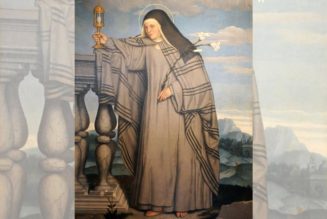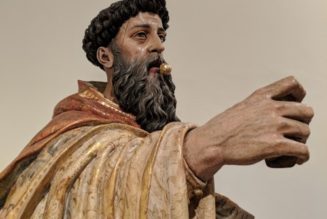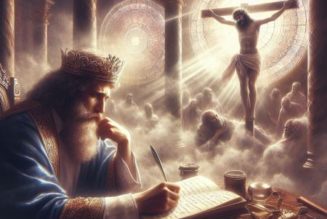2 Minute Read
December is a month in the Catholic Church where the liturgical year ends and is renewed by the season of Advent. It is a month where we see the general theme of the liturgical season being echoed in nature. Darkness has crept over the world, and is increasing each day. Yet, there is hope for soon the days will begin to lengthen and the sun will conquer the night. The earth reveals that there is a light in this dark place and that Light reigns victorious.
A Passing Shadow
The great Catholic author J.R.R. Tolkien knew this reality very well. Throughout his works there is an ongoing contrast between the dark world and the light that illumines it. In particular, Tolkien stressed that even though there is great evil in the world, goodness always triumphs in the end.
This theme of good surpassing evil is shown perfectly in the following passage from the third chapter of his Lord of the Rings saga, The Return of the King,
There, peeping among the cloud-wrack above a dark tower high up in the mountains, Sam saw a white star twinkle for a while. The beauty of it smote his heart, as he looked up out of the forsaken land, and hope returned to him. For like a shaft, clear and cold, the thought pierced him that in the end the Shadow was only a small and passing thing: there was light and high beauty for ever beyond its reach.(The Lord of the Rings, pg. 901)
Even in the dreary, hopeless, shadow land of Mordor the darkness will not last forever. It is only a passing shadow. The light of the sun is there and will return evermore glorious.
This is a consoling thought and something which we must keep always on our minds, for it helps us to realize that the evil in this world is only a passing thing. While it may be hard to see any goodness or beauty around us, Christ has already conquered the Evil One and what we see before us is but a fleeting shadow.
The Dawn Surpasses the Night
The Church makes this truth more visible whenever she celebrates the “Rorate” Mass. This votive Mass during Advent in honor of the Blessed Virgin Mary receives its name from the first words of the opening chant, “Rorate caeli,”or in English “Shower, O heavens.” What is peculiar about this celebration of the Eucharist is that it takes place entirely in candlelight and typically just before dawn.
The symbolism of this Mass abounds and is a supreme “sacrament” of the Advent season. First of all, since it is celebrated at dawn the Church is slowly lit up by the rays of the winter sun. This speaks of the general theme of Advent, which is meant to be a time of expectation eagerly awaiting the arrival of the Son of God. It also echoes to us the truth that the darkness of night does not last, but is always surpassed by the light of day.
Secondly, all present typically hold lighted candles throughout the Mass. Certainly this is a practical way of illuminating the church, but it also symbolizes the reality that darkness is dispelled by a unification of many individual lights. Indeed, when all of us together let our lights shine before men, not hiding them under a bushel basket, we are able to illuminate the world and easily destroy the darkness before us.
This Advent season let us remember: Darkness is a passing shadow and flees more speedily when it sees a multitude of lights.








